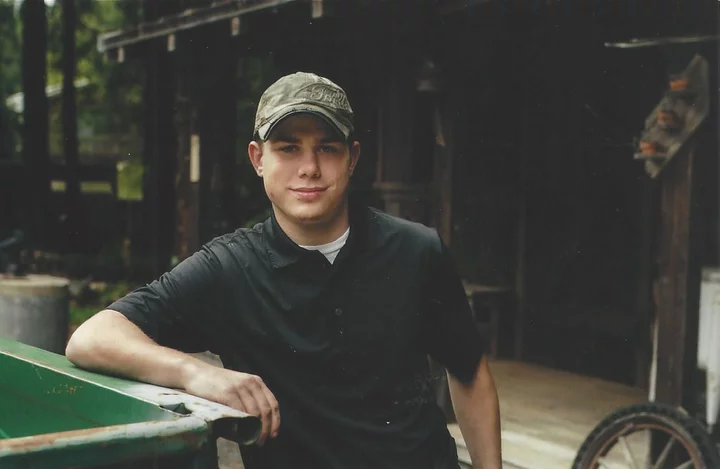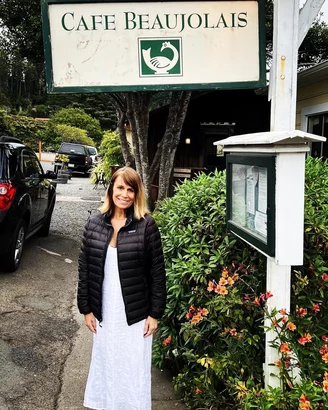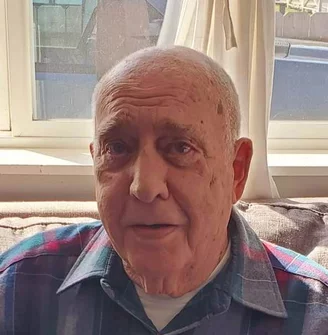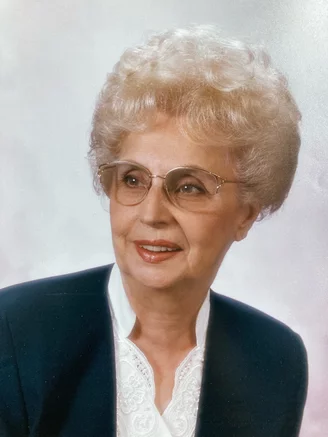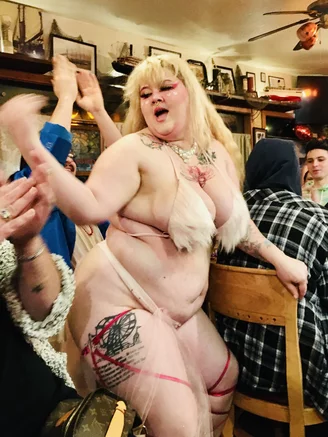OBITUARY: Zakary Michael Avila, 1997-2023
LoCO Staff / Friday, Feb. 17, 2023 @ 6:56 a.m. / Obits
It is with such sadness that we announce the passing of our son, Zakary Michael Avila. Zak was born on February 25, 1997 and passed away on January 18, 2023. Son of Jerry and Leslie Avila; brother to Ryker, Scott, Kim and Jamie; father to Niklaus and Violet; stepfather to Hunter.
Zak grew up in Eureka, attending Arcata Christian School, Freshwater Elementary, Saint Bernards Academy, Eureka High School and graduating Pacific View Charter School. He loved and made friends with so many of his teachers and other staff through the years.
Zak and Ryker were only 10 months apart in age. They were inseparable when they were little — whether it was wrestling each other, playing legos, video games, trekking through the forest or watching their favorite shows together. Some of their favorite places to go were Grandpa Mike’s and Grandma Donna’s, Grandma Evelyn’s, sister Kim or Jamie’s house, or brother Scott’s house.
We have lived in our same home all of Zak’s life where so much time was spent with Ryker and his nephews Trevyn and Tyce in their younger years. They loved running through the sprinklers, riding bikes, lemonade stands, building forts, attempting to spend the night in the tree house until a raccoon ran them out of there, air soft wars and hours and hours of jumping on the trampoline.
Zak’s friendly nature has allowed us to meet many of our neighbors. Even as a toddler on our stroller ride walks always wanting to see if Loretta was home, who became a second grandma to Zak and Ryker throughout all of these years.
From the age of five and on up when we would ask him what he wanted for his birthday or Christmas the answer was always the same: guns and knives. Each one was unique and he loved them all. His favorite day of the year was “shoot day” at Aunt Laurie’s and Uncle Tom’s.
In Zak’s early teenage years he met his lifelong friend Buddy, a.k.a. Gordon. They shared so many fun times together riding quads, fishing, camping and even sinking together in their home made boat made of cardboard.
When Zak was very little he was completely impressed with anyone that was doing hard physical labor — work boots, hard hats, chainsaws, weed eater — you name it, he loved it. Zak loved heavy equipment and had such a natural ability to do amazing work. He was very proud to get his Class A truck driver’s license at 18 years old. Zak was very creative and talented — he loved making beautiful burl tables and cool wooden bowls as well as many other hand made gifts. He was very generous and thoughtful — he loved to surprise you with something that you had wanted or got you something because he just knew you would like it. We will all miss his big smile, amazing problem solving qualities and his awesome tractor skills.
Zak was so loved and will be missed by his dad and mom; Jerry and Leslie Avila; brother Ryker Avila; brother Scott Avila (Hayley); sister Kim Mullins (Daman); sister Jamie Biagi (Victor); son Niklaus; daughter Violet; stepson Hunter; nephews Trevyn, Tyce, Silas and Jag; nieces Brooklyn, Taylee and Cheyenne; grandmother Donna Wallace; and numerous aunts, uncles, cousins and friends.
It meant a lot to Zak to meet his biological family and he was very happy that he was able to connect with each of them: father, Boyd; mother; Crystal; sister, Sara; brothers Richard, Adam and Kaden.
We love you our Zakky boy — you will never be forgotten.
There will be a Celebration of Life for Zak on Saturday March 4, 2 p.m. at the Moose Lodge, 4329 Campton Road, Eureka. Please bring photos or stories if you would like to share.
###
The obituary above was submitted on behalf of Zak Avila’s loved ones. The Lost Coast Outpost runs obituaries of Humboldt County residents at no charge. See guidelines here. Email news@lostcoastoutpost.com.
BOOKED
Today: 3 felonies, 10 misdemeanors, 0 infractions
JUDGED
Humboldt County Superior Court Calendar: Today
CHP REPORTS
Patricks Point Dr / Stagecoach Rd (HM office): Animal Hazard
3517 Mm101 N Dn 35.20 (HM office): Trfc Collision-1141 Enrt
ELSEWHERE
Governor’s Office: Saluting a record year for CHP cadets, California’s next generation of law enforcement officers
Governor’s Office: Governor Newsom meets with congressional leaders to press for long-delayed LA wildfire aid
Governor’s Office: Governor, First Partner statement on the passing of Frank Gehry
KINS’s Talk Shop: Talkshop December 5th, 2025 – Miles Slattery
OBITUARY: Sage Root, 1971-2022
LoCO Staff / Friday, Feb. 17, 2023 @ 6:56 a.m. / Obits
Sage Root
Oct. 30, 1971 - Dec. 20, 2022
Sage entered her eternal home with her loving husband by her side on December 20, 2022. She was born in Fort Bragg to David and Suzannah Monroe. She spent the first few years of her life on Gospel Outreach’s Living Waters Ranch in Whitethorn before moving to Los Angeles. In 1980, she relocated with her parents to Eureka to work with the ministry of Gospel Outreach. For years she longed for siblings and soon had a brother, Jonathon, followed by sisters Annie and Julia.
She attended Eureka High School and her junior year she was invited to live with a couple who pastored a church in Italy. She had an unforgettable experience while working with the youth church group there. She attended CR upon her return where she was part of the cheerleading team.
In 1992, she married Shannon Dixon. She gave birth to her first son Trey. Jake, Cade and Luke followed after. Being a mother came natural to her and she was one of the best. You could find her on the sidelines cheering on the boys at every one of their sports games. Her boys were her life.
She developed an incredible culinary talent and cooked for sporting, school, and church events. At one point she offered weekly meals for purchase that were widely popular. She started a non-profit for cancer research selling her one of a kind granola.
She was a proud resident of Ferndale. She loved the small town atmosphere and wouldn’t have raised her children anywhere else.
She helped develop the MOPS Program at Hydesville Community Church. This was a program she was very passionate about and she played a big role in its success. She spent many years teaching fitness classes at various local gyms and ran many miles through the pasture-lined backroads of Ferndale.
In 2011, she gave birth to her fifth son Sawyer. He was a welcomed blessing at that time in her life.
In 2016, she married Timothy. She won him over with her incredible cooking and sweet gestures. She had a strong relationship with God and helped him strengthen his relationship with God. She was known for her spontaneous trips and they enjoyed traveling together to some of her favorite places such as Nashville, Mendocino and Ashland. They had a love that lasted through good and bad, through sickness and health. Timothy took the best care of Sage.
Sage had a way of completely transforming a home. She had an impeccable taste for interior design and any project she had a part in would turn out magazine worthy. Her last big project was revamping an 1896 Ferndale Victorian she purchased turning it into a modern day oasis.
She would find any excuse to get the family together: Crabs baseball games, river trips, Ferndale festivities, birthday celebrations. One year she held get-togethers for every little holiday because she wanted the younger kids in the family to have those fun memories of her when she was gone. And of course everyone was sent home with a to-go box of leftovers.
Sage was always thinking of others and what she could do for them. She always had the most thoughtful gifts and always the most beautiful words to say. If she had a way to bless someone, she was going to do it. Even in her final moments on earth she was making sure everyone else was okay. That’s just who she was.
Sage was intelligent, talented, thoughtful and witty. She loved her family fiercely and will be greatly missed by them all. Though we are devastated, we are grateful she is now free from pain and at peace forever more.
Sage was predeceased by her mother Suzannah Monroe, and survived by her husband Timothy, her children Trey (Taylor) Dixon, Jake (Samantha) Dixon, Cade Dixon, Luke Dixon, Sawyer Sala, three grandchildren, father David Monroe, brother Jonathon, sisters Annie (Nick) and Julia (Michael), 7 nieces and nephews, her step-children Alyson (Lane) Taylor, Caden Root, Rylynn Root, Gracelyn Root.
The family would like to thank Tamara Douglass, MD at Ferndale Community Health Center for her many years of loving care, and to Hospice of Humboldt for their care during Sage’s final days. There will be a celebration of Sage’s life held in the near future for her family.
###
The obituary above was submitted on behalf of Sage Root’s loved ones. The Lost Coast Outpost runs obituaries of Humboldt County residents at no charge. See guidelines here. Email news@lostcoastoutpost.com.
OBITUARY: Gay Ellen Fulton, 1942-2023
LoCO Staff / Friday, Feb. 17, 2023 @ 6:56 a.m. / Obits
On Feb. 11 Heaven gained an
angel. Gay Ellen Fulton was born Gay Ellen Newell on Nov. 30 1942 in
Fortuna Ca. She lived in Fortuna all her life except when she went
off to Santa Rosa to attend college.
She met the love of her life while her car was broken down. He stopped to help her and that’s where their love story began. After a short time of dating they married and soon after welcomed the first of three children. They were married 59 years and until her last breath she loved her husband Jim unconditionally.
She worked at Bank of America ,where she took over as a teller for her mom when she retired. Later on, she went to work at Humboldt Bank until she decided to work as a teacher’s aide at South School for several years, she was known as Mrs. Fulton and was loved by the kids. After her kids were grown she went to work for The Harland Law Firm with her friend Sharon Berti until she retired. She loved her jobs and loved people.
After she retired her and Jim traveled in their 5th wheel. Some of her favorite places to go were Ruth Lake and Red Bluff. They also went to Wyoming to visit friends. Her most favorite trip was when her and Jim finally got to go to Hawaii. Gay loved the heat and she could be found in a lounge chair with a good book or swimming in a pool.
She loved to read and could finish a book before most people could start one. She had a beautiful smile that could light up a room. She had a huge heart and would do anything for anyone. She could see the best in everyone and was extremely forgiving. She believed in her maker and held onto her faith until the very end. She knew where she was going.
Gay is survived by her husband Jim, son Todd and his wife Jeannie, daughter Heather and (Dennis), sister Joy, brother Dennis and his wife Cindy and daughter in law Ranae. Her precious grandchildren, Lindsey, Kendra, Levi his wife Kelsey, Spencer, Hunter, Malela, Shayna, Tristen and Cheyanne. Great grandchildren Faith, Nathaniel, Peightyn, Penelope, Conrad, Wesley and Ryleigh and baby boy Fulton due in July. She also leaves behind many nieces, nephews, cousins and friends including her dear friend Tammy. She is preceded in death by her biological father G. E. Newell her mother Helen and Dad Roy Simmons, son Jimmy and all her beloved fur babies. What a wonderful reunion that must have been.
She will be greatly missed and never forgotten. Her family will continue to live their best lives in honor of her. We would like to thank everyone for their love, prayers and support during her battle with ALS.
Please join us on March 4 from 2-4 p.m. at the Fortuna Fire hall to celebrate this beautiful ladies life.
###
The obituary above was submitted on behalf of Gay Fulton’s loved ones. The Lost Coast Outpost runs obituaries of Humboldt County residents at no charge. See guidelines here. Email news@lostcoastoutpost.com.
OBITUARY: Earnest Garland Gray, Jr, 1932-2022
LoCO Staff / Friday, Feb. 17, 2023 @ 6:56 a.m. / Obits
Earnest Garland Gray, Jr went to be with his Lord and Savior Jesus Christ on December 29, 2022,
in Fortuna at the age of 90. At the end of his life he put his trust in Jesus.
Earnie was born September 10, 1932, in Omaha, Nebraska. His family moved west to California when he was a young boy. Earnie grew up at Richardson Grove State Park, where his father was a Park Ranger. Earnie would often tell the story of how he collected soda bottles along Highway 101 and earned enough money to purchase a trumpet. He could occasionally be found playing his trumpet in the bars of Garberville, when live music was all the rage.
He graduated high school from Leggett Valley High School and went on to Santa Rosa Junior College. While at Santa Rosa Junior College he met his first wife, Ruth Hague. After the JC, he attended San Jose State and graduated with a degree in Business. Ruth and Earnie now had four children and in 1964 moved to Eureka where Earnie began a long career providing insurance services, mainly to loggers and truckers. In 1973, he was chairman of the committee to build the stadium at College of the Redwoods.
Earnie was a member of Kiwanis Club, Ingomar Club, Baywood Golf and Country Club, and was a founding member of Humboldt Bank. He had a pilot’s license and owned several small planes throughout the years. Earnie took great joy in buying and trading vehicles, from Jaguar Roadsters to De Loreans, every vehicle was kept washed and polished. Earnie enjoyed time at Trinity Lake, racing motocross, water skiing, snow skiing, and hunting with the family. In 1985 he married his second wife Judy. Modeling an excellent work ethic, he eventually retired from the insurance world.
In 1995 he and Judy set off in their RV to discover all that America had to show them. They would winter in Arizona, summer in Wyoming, and went everywhere else in spring and fall. They had a great group of friends with whom they traveled. At the age of 86, Earnie and Judy came back to Humboldt County and settled in Fortuna, to be closer to his children, grandchildren, and great-grandchildren. He could often be found on the sidelines of soccer, baseball, basketball, or whatever the kids were playing. He loved his family dearly and was always there for them. He instilled a love of motorcycles and boating in all of his family. He will be remembered for his love, wisdom, humor, and generosity.
Earnie was preceded in death by his father and mother, Earnest Garland Gray, Sr and Irene Gray, his sister Beverly, and by his beloved son Gerald Gray.
Earnie is survived by his wife Judy; daughter Laura (Mark) Butler, son James (Melody) Gray, son Andrew (Darcy) Gray and their children and grandchildren: Ben (Emily) Mark and David Butler, Mary (Caleb) Rosemary, Heather, Gunnar and Garrison, Samuel Butler, Luke Butler, Susanna (Kenan) Jacob and Ascher O’Hanen; Josh(Magen), Jaxon and Travis Gray, Sarah (Sydny), Ellouise and Everleigh Williams, Hannah (Kyle) Sheehy; Jesse (Leah) Gray, Cody (Jamie) Gray, Chelsea (Brandon) and Andrew Lende, and Jimmy Gray.
Earnie was interred at Ocean View Cemetery in Eureka. A memorial service will be held at Grace Baptist Church in Eureka on March 4, at 2 p.m.
###
The obituary above was submitted on behalf of Earnie Gray’s loved ones. The Lost Coast Outpost runs obituaries of Humboldt County residents at no charge. See guidelines here. Email news@lostcoastoutpost.com.
OBITUARY: Della May Williams, 1927-2023
LoCO Staff / Friday, Feb. 17, 2023 @ 6:56 a.m. / Obits
Della May Williams died on February 9 at Sequoia Springs in Fortuna. She was 96.
Della was born in Centralia, Washington but spent most of her early life in Morton, Washington. She married Dale Cooper in 1946. In 1947 they moved to Fortuna with their daughter Kay. Della and Dale had three more children, Jerry, Jean and Tom. After 17 years of marriage they divorced. Della was later married to Woody McDaniel. After his death she married Edward Barff, who died in 1997. Della spent many of her later years with her companion and traveling partner, Blake Armstrong. They enjoyed seeing the country in their fifth wheel.
Della worked as a telephone operator, in newspaper advertising, and as a bookkeeper for local saw mills, before beginning her career in real estate. She spent many years at Town and Country Real Estate. She often said that she enjoyed all of her various jobs but had a special love for real estate.
She enjoyed many hobbies, including softball, bowling, painting and travel. Della loved to sing, and music was a big part of family life. She also loved big family gatherings.
Della will be missed by her many friends and family. She is survived by four children, many grandchildren and great-grandchildren. A private graveside service will be held for the family.
###
The obituary above was submitted on behalf of Jen Ballew’s loved ones. The Lost Coast Outpost runs obituaries of Humboldt County residents at no charge. See guidelines here. Email news@lostcoastoutpost.com.
HUMBOLDT TODAY with John Kennedy O’Connor | Feb. 16, 2023
LoCO Staff / Thursday, Feb. 16, 2023 @ 5:07 p.m. / Humboldt Today
HUMBOLDT TODAY: California’s strategy to combat homelessness has been largely unsuccessful despite billions invested, the Arcata City Council gets a li’l raise, plus self-driving Teslas are being recalled. Those stories and more in today’s newscast with John Kennedy O’Connor.
FURTHER READING:
- Here’s Why KHSU Has Been Off the Air for the Past Week
- Cal Poly Humboldt is Bringing Back LUMBERJACK DAYS, but it Won’t Be Like the Old Lumberjack Days
- Local Woman Says Her Sister Forged Her Signature and Stole the Pet Store They Opened Together
- California Homelessness: Where Are the State’s Billions Going? Here’s the New, Best Answer
HUMBOLDT TODAY can be viewed on LoCO’s homepage each night starting at 6 p.m. Want to LISTEN to HUMBOLDT TODAY? Subscribe to the podcast version here.
‘Kings, Queens and Things’: Drag Shows are Taking Off in Humboldt, Including One Up-and-Coming Show at an Unexpected Venue
Stephanie McGeary / Thursday, Feb. 16, 2023 @ 4:53 p.m. / Art , Community , Our Culture
Drag performers Komboujia (left) and Ultra Payne (right) host Omega Drag at Gallagher’s Irish Pub in Eureka
###
When you think about an Irish pub, you might think of corned beef and cabbage, fish and chips, whiskey and Guinness. But do you think of drag shows?! Probably not.
Though you might not typically expect a drag show along with your fried food and beer, on the second Saturday of every month Gallagher’s Irish Pub on Highway 101 in Eureka transforms into a drag club where some of Humboldt’s most talented performers lip sync, death drop and vogue the house down in an impressive use of the tiny pub space.
Skyler Celeste, better known by his stage name Ultra Payne, has helped organize a monthly drag revue at Gallagher’s called Omega Drag, which features a regular cast of performers that he considers the “best of the best here in Humboldt County.” Local drag artists Komboujia, Gliterous Cliterous, Thrash and Recycling, Cocky Muffington, Felix Flex and, of course, Ultra Payne herself, hold regular spots at the show. Each month also features one special guest performer, which at the most recent show — Valentine’s GAY, on Feb. 11 — was drag and burlesque artist Baby Fontaine.
“I’m doing it this way because ever since COVID kind of slowed down and restrictions started lifting, drag exploded in popularity,” Celeste told the Outpost in a recent interview. “We’re getting all kinds of new shows here in Humboldt. So I feel like there’s enough space now for drag that people who are just starting out can get their start at other shows, and then we can still have shows with a set list of performers without anybody feeling excluded.”
And Celeste is definitely right. If you’ve been paying much attention to local drag, you may have noticed that Humboldt is experiencing an outpouring of drag, especially over the last year. If you grew up here, like Celeste did, you know that Humboldt used to have virtually no drag shows. Now, in addition to Omega Drag at Gallagher’s, regular drag shows take place at Septentrio Winery, Outer Space, Kiki Planet Clothing Store, Synapsis, and more are being added all the time. This month Greene Lily will host its first drag brunch and Ferndale Repertory Theatre is hosting a drag revue at the end of February.
Unlike in a big city where there are lots of gay bars and nightclubs, rural Humboldt doesn’t have a lot of venues that traditionally hold drag shows. So, the performers here have to be creative, working with local business owners to find spaces to showcase their art.
“It’s really funny,” Celeste told the Outpost. “Whenever I go elsewhere and perform, [the performers] ask, ‘where do you perform in Humboldt?’ And I’m like, ‘a winery, an Irish pub, a boutique shop, an aerial silks studio.”
Celeste and the other drag performers started working with Gallagher’s about four months ago, when the manager (who is very queer, Celeste said) expressed an interest in hosting a drag show at the pub. Celeste said that the Gallagher’s owner was totally on board and has been very supportive of the performers using the space.
Baby Fontaine wows the crowd with her splits.
This recent swell in local drag enthusiasm differs greatly from how things were when Celeste was first started doing drag. Celeste, who is 22 years old, grew up in Eureka and was often bullied in school for being queer. “It was rough,” Celeste said. “I never really had the space or opportunity within my community to be doing what I was doing. But also at the same time, I didn’t care. And I kind of paved my own path.”
Seeing the increase in queer representation in Humboldt is elating, Celeste said, not only because it means more people come to his shows, but also because it means that local folks, especially young people, feel more comfortable expressing their sexual orientation and gender identities.
In addition to the use of unconventional venues for shows, something special about Humboldt drag is the multitude of gender identities represented within the performances. Though drag has existed in many forms for many years, the biggest spotlight has traditionally been given to drag queens – most often gay men adopting exaggerated female styles and personas. In recent years there has been growing representation of female or non-binary performers adopting male personas, known as drag kings. Today’s drag, both locally and around the world, is embracing the full spectrum of gender identities, with trans, non-binary, gender fluid, genderqueer and non-gender conforming performers stepping into the limelight. For these folks, drag is not always about expressing a male or female persona. Sometimes they do both. Sometimes they do neither.
“Gender fuckery” is one term for it, said local performance artist Roux Kratt, who does drag under the stage name Cocky Muffington. On stage, Kratt often leans toward a masculine character, but as a non-binary person, they also sometimes perform highly feminine characters.
Above: Cocky Muffington does a hilarious Wario number. Below: Thrash and Recycling takes the “stage”
Kratt moved to Humboldt from Southern California about six years ago and started doing drag in late 2019, not long before COVID hit. When venues shut down because of the pandemic, Kratt moved their drag to an online platform, hosting virtual shows for Club Triangle. Now that restrictions have been lifted and venues are again open, Kratt is thrilled to see drag shows on the rise in Humboldt.
Like many other drag performers, Kratt utilizes their drag experience to help other budding performers get their start. Kratt has adopted many “drag kids” – young and/or inexperienced folks who Kratt teaches the art form, helping them learn how to do stage makeup, create costumes and develop their on-stage persona. Oftentimes youth who are not accepted by their biological families, will also look to their “drag parent” for support and encouragement in expressing themselves.
“It’s really important to me because it’s something that I wish I had when I was a kid,” Kratt told the Outpost, with tears welling up in their eyes. “Because I wasn’t allowed to be who I am.”
Gliterous Cliterous back bends the house down.
Of course, with the rise in drag performance in Humboldt there has also been a rise in pushback, with some groups and individuals publicly condemning local drag shows, especially all-ages shows. One Ferndale pastor’s attack on local drag, and subsequent threatening speech posted on social media, led to the cancellation of an all-ages fundraiser drag show that was scheduled at the Old Steeple. And another all-ages drag event at the Jefferson Community Center was disrupted by protesters who harassed and threatened the performers.
Hatred and violence directed at drag shows has become increasingly common across the country, and conservative media outlets and politicians have been making unfounded claims that these shows serve as an opportunity for sexual predators to “groom” children. Especially after last year’s shooting at Club Q in Colorado Springs, Colo. – which left five people dead and at least 17 injured – there is definitely an undercurrent of fear in the drag community.
“From seeing everything that’s happened elsewhere, I’m terrified of doing drag,” Celeste told the Outpost. “I still love it. I’m still going to do it. But to know that what I love could possibly be the end of me at any time – it is terrifying. It’s the darkest feeling in the world. Because drag has saved me from so much emotionally.”
Ultra Payne commands the crowd.
Both Kratt and Celeste said that it shocks and saddens them to hear people accuse drag performers of “grooming” children, especially when the goal of holding all-ages drag shows is to provide LGBTQ+ youth with a safe space, and they view themselves as mentors of many of the young performers.
“When [protesters] disturb our shows, they are disturbing our family time,” Kratt told the Outpost. “Because that’s what it is when we’re having these all ages drag shows. It is our queer family. It is a safe space for trans kids.”
Celeste and Kratt also wanted to be clear that at the all ages drag shows, the performances are kept pretty tame. They are very different from the 21 and up shows, like the one at Gallagher’s, where the content might be more raunchy. Sometimes drag, like many types of entertainment, is sexual. “But there isn’t anything inherently sexual about drag,” Kratt said. “Drag is the exploration of gender.”
But despite the threats they face, these drag performers say they will never stop doing what they do.
“Nothing besides death will stop me from doing drag,” Kratt said. “These shows are really important and a lot of performers depend on it for their well being and for their livelihood. I’m thankful to all the other performers – kings, queens and things – that come out and put out this art. Because it really is for all of us, whether you’re in the audience or on the stage.”
The Omega Drag show takes place at Gallagher’s Irish Pub – 1604 4th St, Eureka – on the second Saturday of every month at 9 p.m. This show is 21+. So it might get wild. Get into it.
Komboujia performs a heart-breaking number

